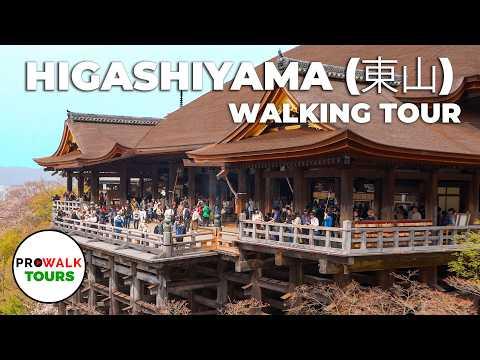Wandering through Kyoto’s Higashiyama District felt like stepping into a living painting. The streets, lined with traditional wooden houses and quaint shops, whispered stories of a bygone era. The cobblestone paths seemed to guide me through a maze of history and culture, each corner revealing a piece of the city’s rich tapestry.
My journey began early in the morning, with the sun casting a soft golden hue over the ancient district. I had been told that Higashiyama, with its blend of traditional architecture and serene temples, offered an authentic glimpse into Kyoto’s past. As I meandered through the narrow streets, I couldn’t help but feel a sense of reverence for the history that enveloped me.
The air was cool and crisp, a welcome respite from the hustle and bustle of modern life. I made my way towards Kiyomizu-dera, the temple that was said to be the crown jewel of the Higashiyama District. The approach to the temple was nothing short of enchanting. The path was lined with cherry blossoms, their delicate pink petals fluttering in the breeze. It was as though nature itself was celebrating the moment with me.
As I approached Kiyomizu-dera, the grandeur of the temple became increasingly apparent. Its wooden stage, jutting out over the hillside, provided a breathtaking view of the city below. The structure seemed to defy gravity, suspended on a forest of wooden pillars. I marveled at the craftsmanship that had gone into creating such an architectural wonder. It was hard to believe that this temple had been built in the late 8th century, and yet it stood with an air of timelessness.
Inside the temple grounds, the atmosphere was tranquil, almost meditative. The soft murmur of prayers and the faint scent of incense filled the air. I wandered through the various halls and corridors, each space adorned with intricate carvings and vibrant paintings. The temple’s main hall, known as the Hondo, was particularly impressive. Its wooden beams and intricate latticework seemed to pulse with the energy of centuries past.
One of the most captivating features of Kiyomizu-dera is its Otowa Waterfall, located beneath the main hall. The waterfall is divided into three streams, each believed to grant different virtues—longevity, success in studies, and a fortunate love life. Visitors are encouraged to drink from these streams using a long-handled ladle. I joined the queue, feeling a mix of anticipation and curiosity. When my turn came, I carefully drank from the ladle, hoping that perhaps a touch of its magic might seep into my own life.
Leaving the temple, I continued my exploration of Higashiyama, taking a leisurely stroll along the historic streets. I passed by charming teahouses and traditional craft shops, each brimming with unique souvenirs. The vibrant atmosphere of the district was infectious, and I found myself drawn to a small shop selling hand-painted fans. The intricate designs and vibrant colors were mesmerizing, and I couldn’t resist purchasing one as a memento of my visit.
As the day progressed, I ventured into the narrow alleys that crisscrossed the district. These hidden paths led to lesser-known temples and shrines, each with its own distinct character. One such gem was Kannon-do Temple, a serene space dedicated to the goddess of mercy, Kannon. The temple was modest in size but exuded a sense of calm and peace. I took a moment to sit in the garden, reflecting on the experiences of the day.
The highlight of my day came in the late afternoon, as I made my way to the famous Ninenzaka and Sannenzaka slopes. These historic streets are lined with traditional wooden houses and offer stunning views of the surrounding area. The atmosphere was particularly enchanting as the sun began to set, casting a warm glow over the entire district. I strolled along these ancient pathways, soaking in the beauty of the architecture and the vibrant colors of the setting sun.
As nightfall approached, I found a cozy little restaurant tucked away in one of the alleyways. The warm ambiance and the aroma of freshly cooked food were inviting. I decided to indulge in a traditional Kyoto-style kaiseki meal, a multi-course dining experience that showcased the region’s culinary artistry. Each dish was a work of art, beautifully presented and bursting with flavor. The meal was the perfect way to end a day of exploration and discovery.
As I left the restaurant and walked back through the dimly lit streets of Higashiyama, I couldn’t help but feel a deep sense of contentment. The district had offered me a glimpse into Kyoto’s rich heritage, a journey through time that was both enriching and inspiring. Kiyomizu-dera and the surrounding areas had left an indelible mark on my heart, a reminder of the beauty and tranquility that can be found in the most unexpected places.
Kyoto’s Higashiyama District is more than just a destination; it’s a living testament to the city’s enduring spirit and cultural legacy. My time there was a reminder of the power of history and tradition, and the ways in which they continue to shape our understanding of the world. As I bid farewell to this enchanting corner of Kyoto, I carried with me the memories of a day well spent, and the knowledge that I had experienced something truly special.
